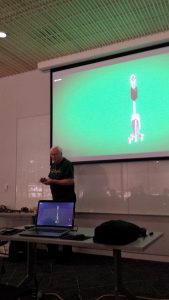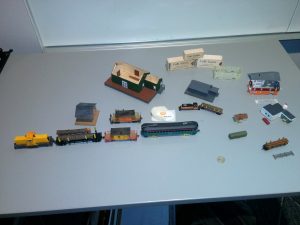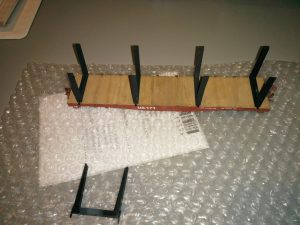Cliff Green, Photos by Cliff and Russ Segner
It was a dark and stormy night, September 29th, 2016.

Chip Van Gilder at the Renton Clinic giving a 3D modeling and printing presentation. (Photo by Russ Segner)
Actually it was a very pleasant evening, not dark and stormy, and I enjoyed seeing the brand new Renton Highlands Library (opened in 2016) for the first time. The library facility is big and bright and comfortable, although the Renton clinic organizers are looking for a permanent home outside of the library system (the KCLS meeting rooms can only be booked a couple of months in advance and are in heavy demand).
I joined nine other clinic attendees, settling in for a fine presentation by Chip Van Gilder on “3D Printing”.
Click here to read an overview of what 3D design and printing is about.
Chip has been designing and creating 3D printed items for over three years. He has uploaded over 400 designs to Shapeways, a 3D printing service, although currently only a few of his items are available for sale. Shapeways has over 12,000 model railroading items for sale on its site.
Chip primarily uses a tool named SketchUp for the 3D modeling. There are free and professional versions of SketchUp available for downloading, and there is a beta version of SketchUp named my.SketchUp that runs in a web browser.
Our clinic consisted of Chip creating a 3D model of a switchman’s shanty (from a picture he found on the web) and uploading it to his account on Shapeways. He first created the 3D model in full 1:1 dimensions, then later reduced the model to HO scale (1:87.1). Chip exported the model as an STL file and uploaded it to the Shapeways web site. He then displayed some of the printing material options and associated pricing. Materials available range from cheap and unsuitable to an appropriate plastic to wildly expensive (e.g. platinum or gold). The 3D model that Chip uploaded was not fully detailed or ready for printing (typically the designing process will take significantly longer than an hour), but was an excellent demonstration of the overall process.
Paul Vaughn brought an Sn3 flat car and Russ Segner brought two Sn3 ore cars for the display table.
The Clinic was concluded promptly at 8:45 pm, making sure everything was wrapped up before the library closed and the motion sensitive death-ray laser security service turned on.





No Comments Yet